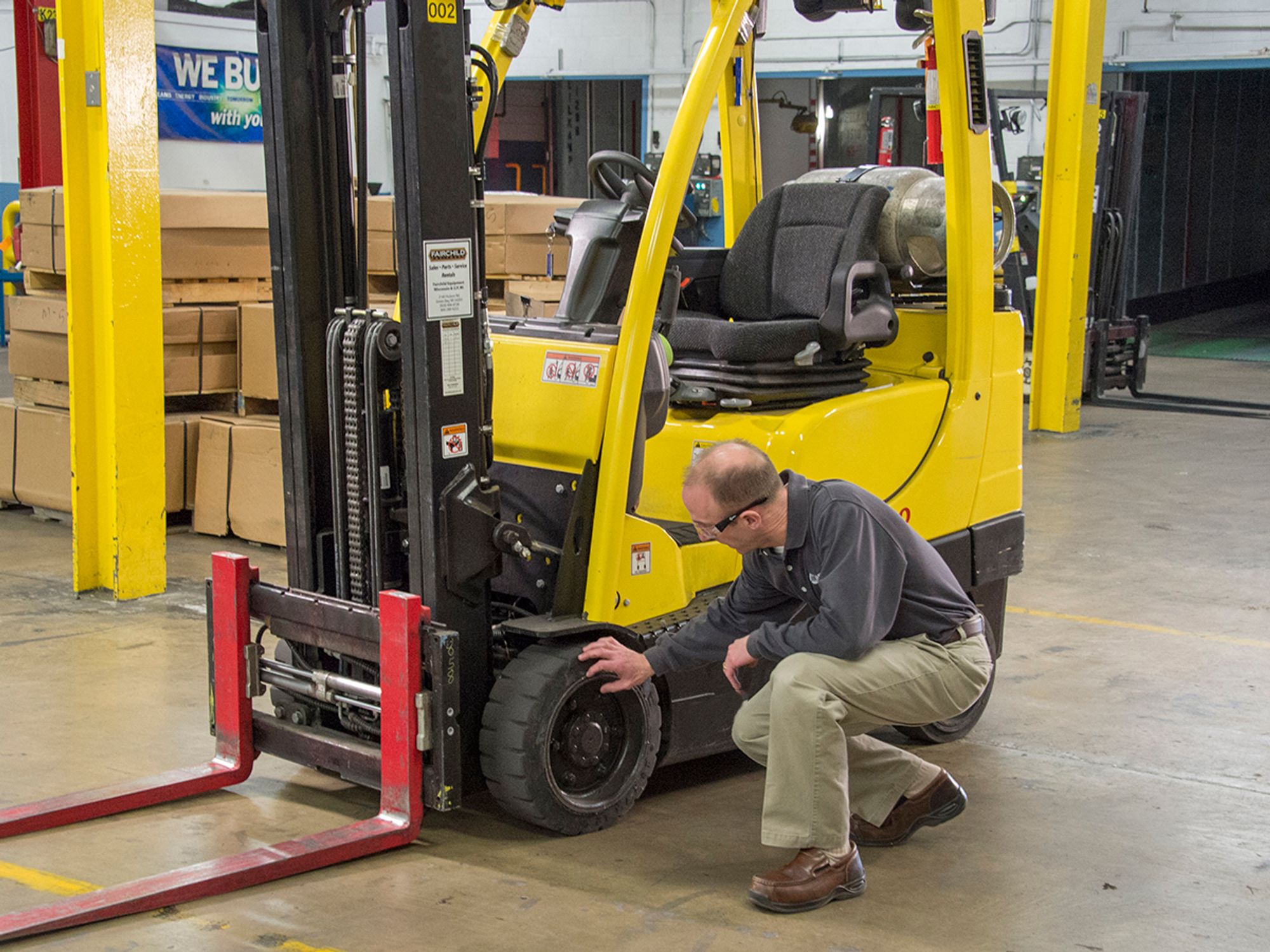Daily inspections — Operational

- A PIT’s fluids, power sources, attachments, systems and controls, must be inspected and maintained to ensure proper operation and safety in the workplace.
Fluids
Where applicable, such as sit-down forklifts, hydraulic and brake fluid levels must be adequate.
Gas or diesel forklifts should have sufficient fuel for operation and adequate engine oil and radiator coolant levels.
Where applicable, operators should ensure the engine oil level, radiator coolant level, and transmission fluid level are adequate.
Battery
A PIT’s battery must be charged and in good repair (e.g., no corrosion or missing cable insulation), with its connections tight and in good repair (e.g., no cracks or excessive wear) as well. The cell caps in the battery cover must be in place and the electrolyte level must be adequate.
Battery gates (pallet jacks) and compartments should be secured.
Attachments
The nameplate on the PIT should account for any attachment being used, with the attachment in good repair (e.g., no cracks or bends).
Systems and controls
PIT inspectors (which can be the operator) must check that several components of the system and controls are working. They must check if the motor is running smoothly. They must also check that the accelerator is working and functioning smoothly, and that the steering is smooth and responsive (e.g., free of excessive play).
The employee must ensure the horn, whistle, gong, or other warning device sounds. The brake must be working and functioning smoothly (e.g., no grabbing), along with the parking brake (e.g., holds the forklift on the incline). The drive control and tilt control must work in forward and reverse and function smoothly (e.g., no excess drift for the tilt control). The lift controls must raise and lower the forks properly and function smoothly (e.g., no excess drift), and the attachment control must work and function smoothly (e.g., no hesitation). Additionally, the turn signal, backup alarm, lights, battery discharge indicator, and hour meter should also be working.
On electric forklifts, order pickers, powered pallet jacks, reach trucks, stand-up tow tractors, and pallet jacks, employees should ensure the battery discharge indicator is working.
Gas or diesel forklift and LPG forklift operators must ensure the engine runs smoothly, and that the fuel gauge, ammeter indicator lamp, oil pressure indicator lamp, and water temperature gauge work.
Propane tank
On an LPG forklift, the operator must ensure the propane tank restraint brackets are in good repair (e.g., no cracks, bends, or rust) and that the tank is properly mounted on the locator pin. The tank must fit within the profile of the truck and be in good repair (e.g., no cracks, dents, or rust). The hoses and connectors must be in good repair (e.g., no cracks or kinks) and securely attached. Additionally, the pressure relief valve must be pointing up.
